Deerfield Academy: Bruce Barton’s fundraising letters from 1946⁄47, letters 6, 7 and 8
- Exhibited by
- SOFII
- Added
- June 06, 2011
- Medium of Communication
- Direct mail.
- Target Audience
- Individuals.
- Type of Charity
- Children, youth and family.
- Country of Origin
- USA.
- Date of first appearance
- 1946.
SOFII’s view
Featured here are letters six, seven and eight from the 21 letters in this SOFII series, three more fine examples of the fundraising letter-writer's art from an age gone by. As usual, they are instructive as well as interesting. But these more than 60-year-old letters also open a window on a vanished world, a time when written postal communication was the order of the day and it was not unusual to receive carefully crafted epistles that said thrilling and moving things in an elegant and interesting way that would, as George Smith once said, 'make the heart soar'. Sadly, we don't see letters like these very often, these days.
Summary / objectives
As with all the Deerfield letters, these three were written to raise money for Barton's old school, Deerfield Academy. But from their tone and style one can see that they are also part of a carefully constructed long-term programme of reassurance, comfort, cultivation and development. Long before fundraisers decided that relationship fundraising, stewardship and donor care should be fashionable, Bruce Barton was doing it, naturally.
Background
As Bruce Barton sat down to write the first of these three letters the Second World War had just ended and the world – even for privileged Americans such as Barton and the people he is writing to – remained a hostile and uncertain place. But hope is on the horizon and this leaps out of Barton's letter as he reminds his readers of how much they have and all they can be thankful for.
'It certainly is worthwhile to have a school that can keep turning out boys like these' he concludes, as he reminds his readers of the sacrifice of recent years. And though it's a generation or two ago and a world away from where you are, the reader of today, you can't help but nod in agreement with him.
Look at how these letters start. No preamble, no waffle, Barton just dives straight in there with an anecdote that captures your interest and attention while it makes its point in such a gentle, unthreatening way that you are captivated and captured all at the same time. It's the subtle conversion of the willing, inducing recipients to give till it hurts to support something that, obviously, both writer and reader truly love and value.
The anecdote with which he starts letter seven about the meanest man in Deerfield is priceless, and not just for its subject's unlikely name. This letter though is remarkable mainly for the engaging way Barton involves his readers in the school's spending decisions. And he even shows that he's not infallible by leaving out the question mark that should end his final point. Notice also in letter eight how Barton not so subtly introduces the giving levels of other parents, all wrapped up in a compelling story that ends with some tax advice and a brilliant PS that answers commonly asked questions. The only thing that the reader needs to do now is to fill out the cheque.
Barton is a master of reassurance, able at will to make everything sound easy, interesting, urgent, essential, or whatever other emotion or sentiment might suit his purpose at the time. He writes effortlessly, probably because he knows his subject inside out and is sincere in what he says.
These letters continue to be both a pleasure to read as well as fine examples to follow in their style and structure. We look forward to bringing you some more soon.
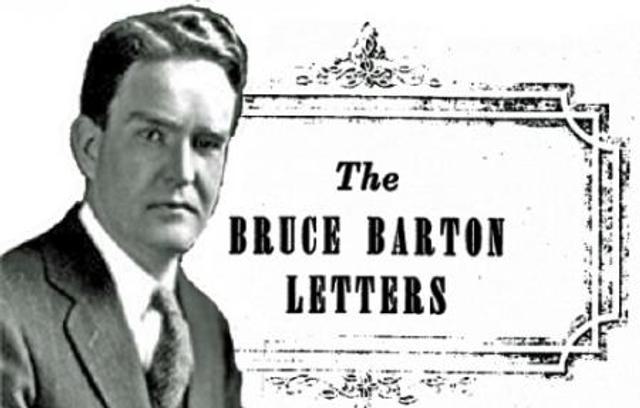
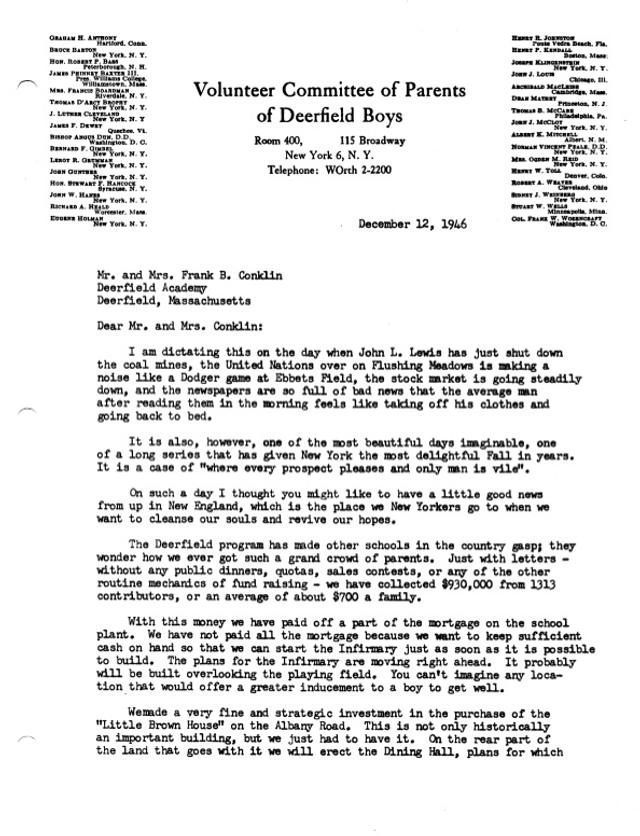 View original image
View original image
 View original image
View original image
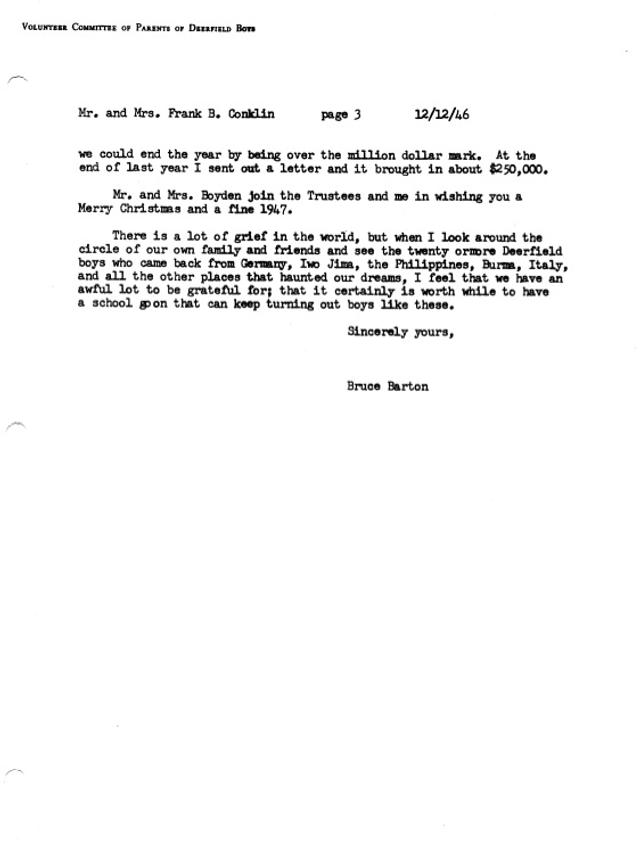 View original image
View original image
 View original image
View original image
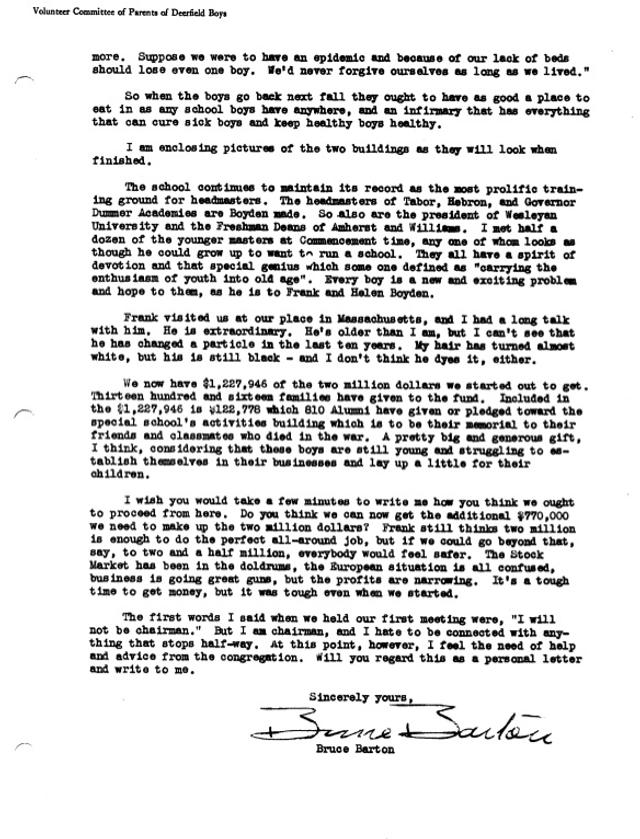 View original image
View original image
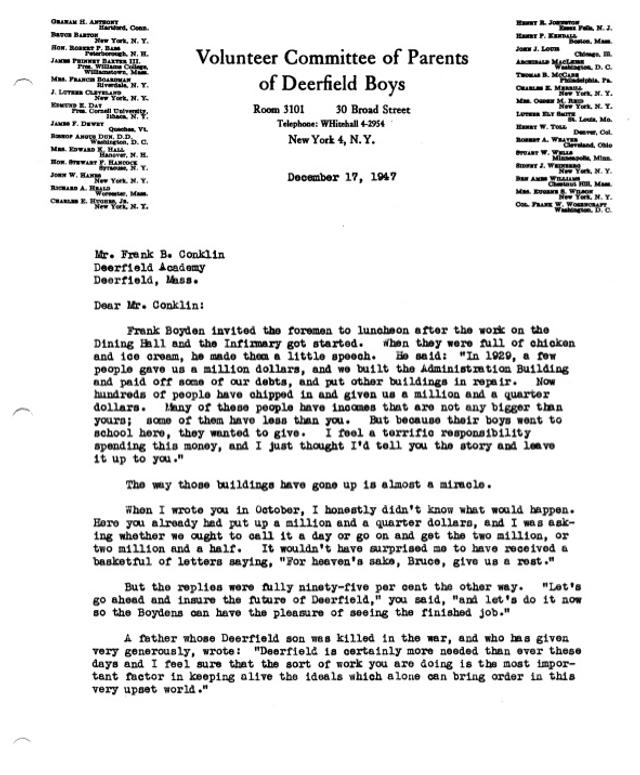 View original image
View original image
 View original image
View original image
















